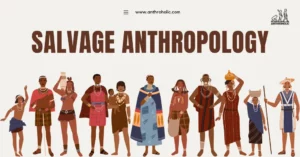+91-7303290503, +91-9557169661 | MON to SUN 10:00 AM - 6:00 PM
Paralanguage and Paralinguistic Communication
Paralanguage, an essential facet of human interaction, lies within the realm of non-verbal communication. It encompasses an array of sounds and features that provide critical context to our verbal communication. Anthropologists have long been intrigued by paralanguage, recognizing its potential to offer unique insights into human culture, social dynamics, and evolution.

Definition of Paralanguage
Paralanguage can be described as the non-verbal elements of communication used to modify meaning and convey emotion. It includes pitch, volume, speed, and voice quality, as well as laughter, crying, and sighs [1]. These elements contribute significantly to how messages are interpreted, often carrying more weight than the actual words spoken.
Paralinguistic Features and Their Significance
Some common paralinguistic features include:
- Voice Quality: This involves characteristics like pitch, resonance, articulation, tempo, and volume. For instance, a soft, slow speech might indicate sadness or reflection, while a fast, high-pitched speech could denote excitement or anxiety.
- Vocal Interferences: These are sounds or interruptions that are produced unconsciously or semi-consciously, such as umms, aahs, sighs, and pauses. They can convey discomfort, uncertainty, or a desire for pause in conversation.
- Temporal Features: These relate to the timing and rhythm of speech, including speed, pauses, and silence, which can reveal feelings of confidence, nervousness, contemplation, or discomfort.
Table 1: Paralinguistic features and potential interpretations.
| Feature | Potential Interpretation |
|---|---|
| High pitch | Excitement, anxiety |
| Slow speech | Sadness, reflection |
| Pauses | Uncertainty, contemplation, discomfort |
| Vocal Interferences | Discomfort, uncertainty, desire for pause |
Paralanguage in Anthropological Research
Paralanguage has proven invaluable in anthropological research, helping scholars to decipher and understand the subtleties of human communication within specific cultural contexts.
Cultural Variations in Paralanguage
Culture significantly influences how paralanguage is used and interpreted. What might be perceived as aggressive or overly loud speech in one culture might be considered normal or even subdued in another [2]. Anthropologists often explore these cultural differences, offering key insights into diverse communication practices and norms.
Paralanguage and Social Dynamics
Paralanguage can reveal a wealth of information about social dynamics within a community. Factors such as tone, pitch, or volume can indicate power dynamics, emotional states, or interpersonal relationships. For example, in some cultures, a lower pitch or louder volume might be used to assert dominance or express anger, while a higher pitch and softer volume might signify submissiveness or respect [3].
Evolutionary Perspective on Paralanguage
From an evolutionary perspective, paralanguage is believed to predate linguistic communication, serving as an early form of conveying emotion and intent among our ancestors. Studies have shown that certain paralinguistic cues, such as emotional inflections in voice, are remarkably consistent across cultures, suggesting a deep-rooted, universal element to these non-verbal cues [4].
Paralanguage in Anthropological Fieldwork
Paralanguage can serve as a vital tool for anthropologists conducting fieldwork, enabling them to tune into the subtle nuances of the communities they study.
Observational Methodology
Effective observation requires more than simply watching and listening; it requires awareness of paralinguistic cues. By carefully observing voice modulation, speech rate, and other vocal nuances, anthropologists can discern unspoken emotions or attitudes, providing a deeper understanding of the community’s social structure and interactional norms.
Interview Techniques
During interviews, attention to paralanguage can aid in interpreting participants’ responses. Noticing changes in vocal pitch, intensity, or rhythm can provide context and insights that the actual words may not convey. It can also help the anthropologist recognize when a topic might be sensitive or uncomfortable for the participant, allowing them to adjust their approach appropriately.
The Future of Paralanguage Research in Anthropology
With the advent of advanced technology and interdisciplinary approaches, the potential for future research into paralanguage within anthropology is vast.
Interdisciplinary Collaboration
Collaborations with linguists, psychologists, and data scientists could pave the way for more robust, comprehensive studies of paralanguage. Combining anthropological expertise with advanced analytical techniques and theoretical perspectives from other disciplines can enrich our understanding of human non-verbal communication.
Technological Advancements
Emerging technologies, like artificial intelligence and machine learning, could be harnessed to analyze paralanguage more accurately and on a larger scale. These tools can help discern patterns and correlations that may be missed in manual analysis, providing new insights into how paralanguage influences human communication.
Concluding Remarks
Paralanguage, a powerful tool within the anthropologist’s toolkit, enables a deeper understanding of the complex tapestry of human communication. As we continue to delve into its intricacies, its role in bridging cultural understandings and unearthing socio-cultural dynamics will remain of paramount significance. Future explorations, bolstered by technological advancements and interdisciplinary collaborations, promise exciting insights into this fascinating field.
References:
[1] Trager, G. L. (1958). Paralanguage: A first approximation. Studies in Linguistics.
[2] Tannen, D. (1981). New York Jewish conversational style. International Journal of the Sociology of Language.
[3] Henley, N. M., & Kramarae, C. (1991). Gender, power and miscommunication. In Miscommunication and Problematic Talk.
[4] Sauter, D. A., Eisner, F., Ekman, P., & Scott, S. K. (2010). Cross-cultural recognition of basic emotions through nonverbal emotional vocalizations. Proceedings of the National Academy of Sciences.




